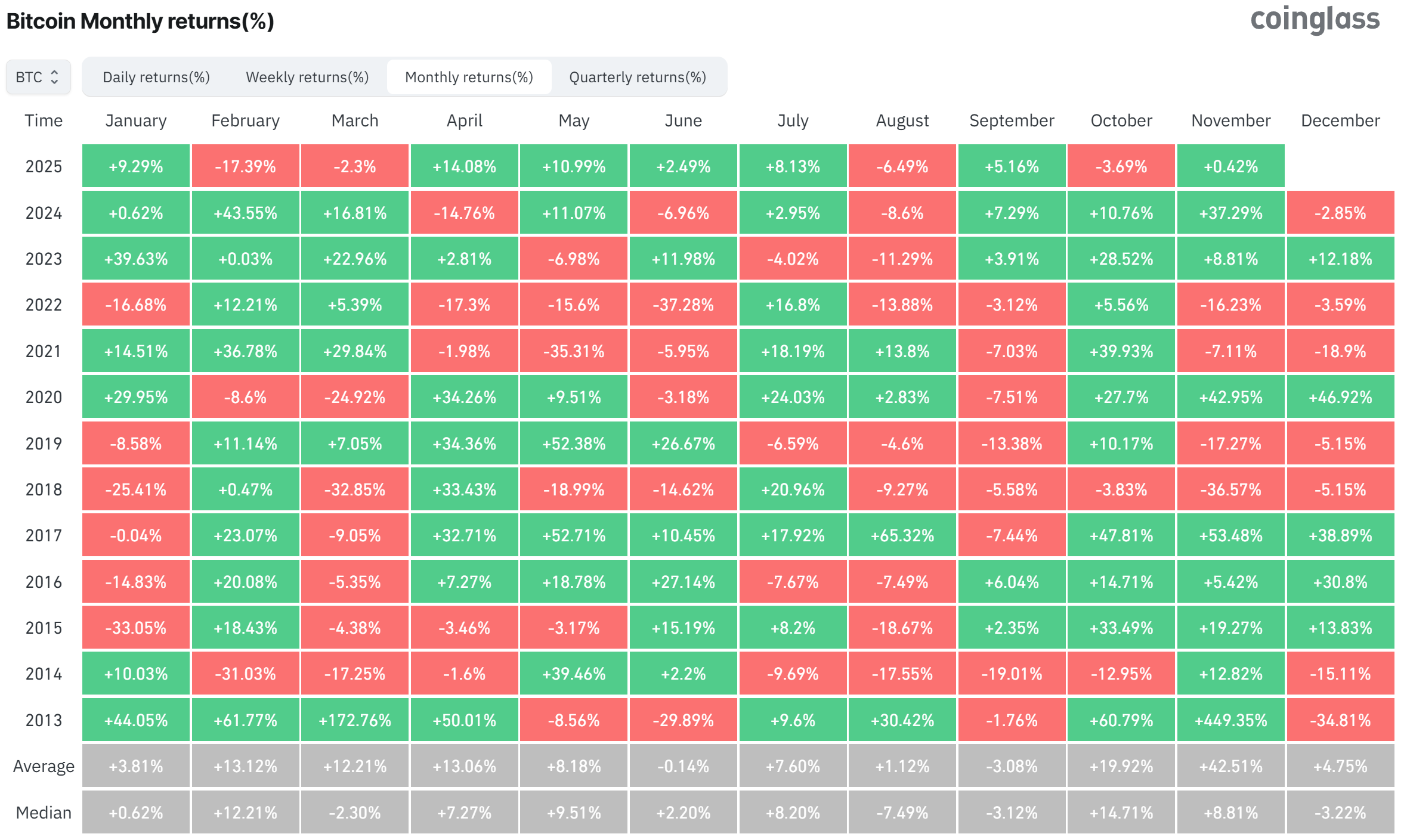Bitcoin entered November as its strongest month of gains in history, with an average gain of 42.51% since 2013. So, if history is anything to go by, Bitcoin could top $160,000 this month.
However, one cryptocurrency analyst pointed out that several macroeconomic factors are also at play.
“I think seasonal charts are very important, but they have to be combined with many other factors,” said Markus Thielen, crypto analyst at 10x Research.
Looking ahead, there are expectations that the US Federal Reserve will further lower interest rates, and the US and China are working on a trade deal. Both developments could be advantageous for Bitcoin. But the government shutdown and U.S. tariffs have added to the economic uncertainty.
Here’s a breakdown of some of the key trends to watch in the coming weeks.
Easing trade tensions between the US and China
Thursday’s meeting between U.S. President Donald Trump and Chinese President Xi Jinping is seen as a positive step toward ending U.S.-China trade tensions.
President Trump praised his meeting with the Chinese president in South Korea as “excellent.” The talks also included an agreement by President Trump to reduce tariffs on China, resume U.S. purchases of soybeans and lift restrictions on rare earth exports for one year in exchange for a crackdown on China’s fentanyl trade.

Monthly Bitcoin returns since 2013. source: coin glass
President Trump told reporters he expected a trade deal with China to be reached “soon.”
President Trump’s threat of tariffs against China has been blamed for the recent cryptocurrency crash, where $19 billion was liquidated in just 24 hours on October 11th. Since then, the cryptocurrency market has struggled to recover.
But Dennis Wilder, a Georgetown University professor and senior fellow at the China Initiative, told CBC News that while the talks were a “mini-pause” in the trade war, it’s not over.
US Federal Reserve to cut interest rates and end quantitative tightening
It was just days ago that Fed officials voted for another quarter-point rate cut, bringing the key lending rate to its lowest level in three years.
The date for the next Fed meeting is set for December 10, 2025. Traders are pricing in a 63% chance of a rate cut, according to data from CME’s FedWatch, a tool that measures expectations for interest rate changes from the Federal Reserve.
Federal Reserve Chairman Jerome Powell surprised markets on Wednesday by saying the move was “not a foregone conclusion.”
The Fed’s interest rate cuts are seen as bullish for Bitcoin, as lower borrowing costs have historically motivated investors to trade riskier assets such as cryptocurrencies.
Added to this is the Fed’s recent decision to end its quantitative tightening (QT) program on December 1st. QT is the process of shrinking a central bank’s balance sheet. QT’s goal is to cool an overheating economy and prevent inflation from rising rapidly.

sauce: Arthur Hayes
The opposite of this, quantitative easing, is seen as good for cryptocurrencies because it involves central banks injecting more cash into the economy, with some of that money flowing into alternative assets.
US government shutdown extends
The U.S. government shutdown will soon enter its fifth week, approaching the longest in U.S. history, as Republicans and Democrats remain deadlocked over government spending plans.
Related: Bitcoin’s 4-year cycle isn’t over, next recession predicts 70% drop: VC
On Thursday, President Trump called on Republicans to abolish the “Senate filibuster” rule, which allows a minority of senators to block majority action, claiming it was the cause of the government shutdown.
“The choice is clear: Activate the ‘nuclear option,’ eliminate the filibuster, and make America great again!” Trump wrote on Truth Social.
The end of the shutdown, along with important developments in the Cryptocurrency Market Structure Act, also known as the CLARITY Act, is seen as a necessary step for the SEC to give the final green light to some crypto ETFs.
magazine: Bitcoin blinking ‘unusual’ top signal, Hayes suggests $1 million BTC: Hodler’s Digest, October 19-25


